Battleships against batteries of the Red Banner Baltic Fleet squadron operation in the Bierk Archipelago
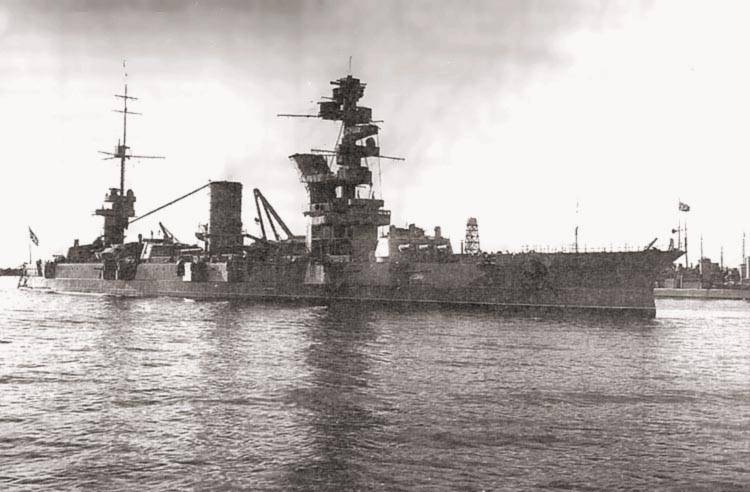
The aim of his shelling was a 10-inch coastal battery, built by the Finns in the 1930s. It was against this battery that throughout the whole of December 1939 the KBF undertook several large-scale operations carried out by the squadron and bomber ships aviation Air Force KBF.
LC Marat (before 31.03.1921 - Petropavlovsk) and October Revolution (before 27.06.1925 - Gangut), built back in 1909-1914, were the core of the Red Banner Squadron by the beginning of the Soviet-Finnish war . Despite the fact that in 1928-1931's. "Marat", and in 1931-1934. - The October Revolution, which were modernized at the Baltic Shipyard in Leningrad, these ships, of course, were already obsolete at that time. Strongly inferior in their main TTEs to almost all the old modernized and, especially, new (built 1930-s) foreign forestry of that time, the Soviet LK were still strong enough to fight the large NKs of the small fleets of the Scandinavian countries. For example, in comparison with the Finnish and Swedish coastal defense battleships, our ships looked very impressive. But precisely in this role - the "opponent" to the Finnish battleships - our LC, unfortunately, did not manage to come out. They had to perform tasks of a completely different nature.
“Marat” (commander - captain 1 of the rank S.F.Belousov) and “October Revolution” (captain 1 of the rank D.Vdovichenko), as already mentioned, were part of the Red Banner Baltic Fleet squadron, the final composition of which was approved by order People's Commissar of the Navy No. 0084 from 28 July 1939. Both LCs were based on the main base of the Red Banner Baltic Fleet - Kronstadt, usually located on the Large and Small Raids.
12 October 1939. The squadron commander, flagship 2, rank NN Nesvitsky, in his order No. 055, summed up the disappointing results of combat training for the 2 period 1939. According to the commander, the Squadron fire training was “in an unsatisfactory condition”. The LCs included in the plan of the year of firing performed for the “satisfactory” assessment, and even then only thanks to the “shootout” of several unsuccessful combat exercises. So, “Marat” had to repeat 4 unsatisfactory shooting with 120-mm caliber, and the October Revolution - 3 with main shooting and two “anti-mine” caliber, as a result of which more difficult exercises could not be performed (for example, shooting with a range-finder method joint preparatory shooting). As a result, “Marat” achieved the average score of 3,33, and the “October Revolution” - 3,30.
Such modest results, in the opinion of N.N.Nesvitsky, were explained by the following circumstances: “a) insufficient experience and lack of systematic training of US; b) lack of proper care for the materiel and daily check of its readiness for reliable operation; c) poor training of personnel to work in difficult and emergency conditions; d) insufficiently precise organization and coordination of points of combat posts; e) lack of exactingness on the part of the command of the ships, the implementation of combat instructions and instructions. ” The general conclusion, oddly enough, was made like this: the ships were prepared for the fire missions under the 1939 plan, the Marat LC was better prepared. For some reason, the head of the RKVMF Combat Training Directorate, Yu.F. Rall, who almost asserted the readiness of the Red Banner Baltic Fleet ships (from 1.12.1939), came to almost the same conclusion, both of them were “ready to carry out fire artillery missions in difficult conditions (! - avt) ". The only drawback, in his opinion, was the unreliable nasal 12-inch tower at the October Revolution.
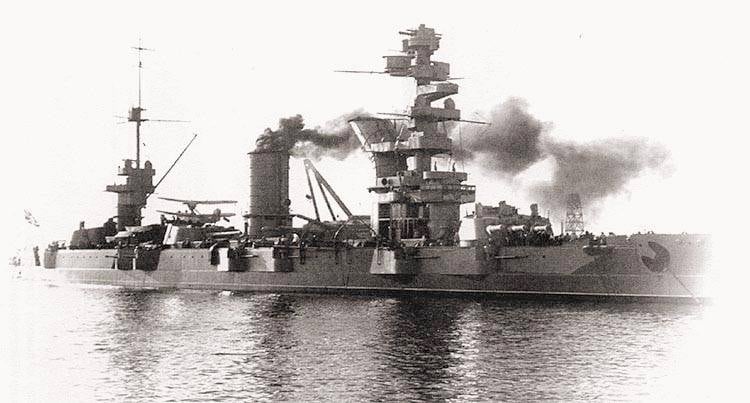
Even worse on battleships was the case with the use of torpedo weapons. Torpedo firing on the fly day and night were not worked out, as noted by N.N.Nesvitsky, “absolutely”. Therefore, it is not surprising that Marat received an 2,25 score for torpedo shooting, and the October Revolution - 3,12.
More or less good results were achieved in the preparation of warheads-1, warheads-4 and warheads-5. For example, for the navigator unit, Marat received an average 4,59 score, and the October Revolution - 4,47, and for electromechanical, as well as communication and observation, from 3,8 to 4,3. As a result, N.N.Nesvitsky was forced to admit that "the task set by the order of the NKVMF and the Red Banner Baltic Fleet armed forces on combat training at 1939 was not completed in terms of operational-tactical and firing training." In the future, the squadron commander somehow changed his point of view and declared that “LK completed their fire training (?! - author)”.
The combat mission for the LK Baltic Fleet was originally formulated as early as the Red Banner Forces Directive from 11 in November 1939, according to which it was required to have a LC “on watch at the Big Raid to provide fire support to the army’s flank”. Practically unchanged, this provision was then transferred to order No. 5 / op, approved by the Red Banner of the Red Banner Baltic Fleet 23 in November 1939, where the final task of the Baltic LC was: “Have LC in immediate readiness to leave the Main Base to provide fire support to the left flank 70 th Infantry Division in the area Bierke-state border.
Thus, the fleet command did not intend to use the LK as a strike force to destroy the Finnish surface fleet, but planned to gradually, as necessary, draw them to the destruction of the enemy’s coastal defenses, keeping them until that moment as their main battle reserve.
As prescribed by the operational plan, the first 10 days of the war LK stood without any movement in the Main Base. While parts of the Red Army advanced further and further along the Karelian Isthmus, the High Command had the idea of supporting the advancing artillery ships of the Red Banner Baltic Fleet squadron of our advancing divisions in the Koivisto area. As a result, on December 9, the Red Banner Baltic Fleet division, by its order No. 17 / op, demanded that the squadron “conduct an operation to support the left flank of the 123-th SD in the area of Bierke with the simultaneous suppression of Saarenpa, Seyvete, Torsaari ”. In turn, the squadron commander specified the task of the ships: the LC “October Revolution” was instructed by artillery fire to “keep the battery of Saarenpya in silence after suppressing its air force”, and the 3 th division of the destroyers “to carry out a preliminary reconnaissance trawling in the maneuvering area No. XXUMX LK” also provide security LK. Leaders of Leningrad and Minsk, EM Steregushchy, were also assigned to the operation, who were ordered to bombard the area of the most likely location (! - auth.) Of the batteries on Fr. Torsaari "and the area Bierke.
Before proceeding to the description and analysis of the first combat campaign of the squadron, a few words should be said about the very purpose of the operation. It may seem surprising, but the very object of our attacks - the Finnish coastal battery Saarenpa (as well as other enemy batteries) was completely unknown to our command. Everything rested on the fact that the Intelligence Division (RO) of the fleet headquarters knew practically nothing about the true whereabouts, the composition, the type, or the firing range of the enemy battery.
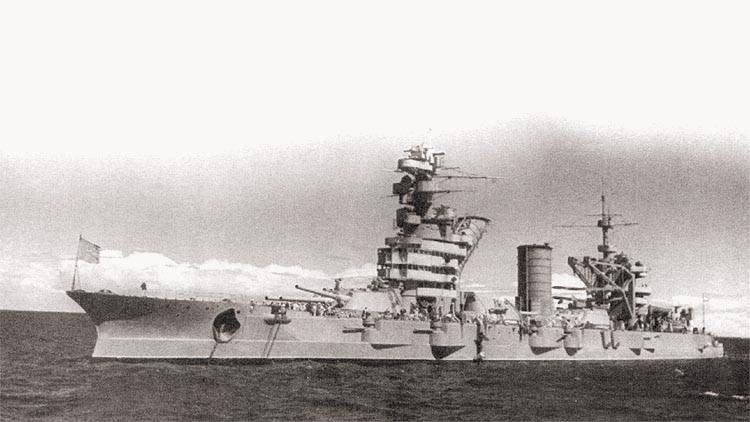
According to the RO headquarters of the Red Banner Baltic Fleet it was believed that on Fr. Bierke is a 4-gun 254-mm battery, which is an ordinary open-type Russian battery on the so-called. "Machine tools Durlyakhova." According to the scheme stored in the RO, the Finnish 10-inch battery was located in the Pitkäniemi metro area, i.e. in the place where it was installed in World War I. In fact, the picture was somewhat different.
In the place where the main battery was supposed to be, the Finns had a 2-gun 152-mm battery. And the 6-gun 254-mm battery (and not the 4-gun, as we assumed - note aut.) Was located in the southern part of Bierke, on the slope facing the sea and covered with forest, about 800 m from the coast. The guns were placed in separated blocks, at a distance of 175-325 m one from another. The linearity of the location of the guns was not respected. Each gun was in a reinforced concrete courtyard with a diameter of 13,5 m. The length of the front of the battery from west to east was approx. 1000 m, and from south to north - 500 m. In the rear of the battery, at a distance of 300 m from the 4 gun, there was a gearbox, which was a reinforced concrete tower with a height of 18 m.
Early in the morning of December 10, on 5.45, two EMs of the 3 Division, Volodarsky and Engels, left the Main Base and headed to the maneuvering area of the squadron for reconnaissance trawling. And at 7.00, a meeting of the commanders was held at the October Revolution, which was familiarized with the task. In 7.15 on the ship, a rally of personnel was held on the upcoming campaign, and 8.00 LC, on board which were deputy. The People's Commissar of the Navy, the flagship of the 2 fleet of the rank of IS Isakov and the commander of the Red Banner Baltic Fleet squadron N.N. Nesvitsky, withdrew from the anchor. Behind the ice edge, 6 MO type boats joined the LC.
Having put the paravanas, the ships lined up in order No. XXUMX and headed for the target. Soon a detachment of leaders with the EM "Steregushchy" separated from the squadron and went to the position to fire the battery on Fr. Torsaari.
In general, the squadron squadron, which went on a mission, was quite impressive: 1 LC, 2 leader, 5 EM, 5 SCR, 4 high-speed TS and 6 SKA.
When approaching Bierke, in 10.23, SKA (for PLO purposes) began to drop depth charges. In 10.51, the squadron, having speed of 12 nodes, lay down on the 279 combat course. ” On LK have played combat alarm. The distance to the battery at that moment was approx. 120 cab. Bierke was not visible from our ships, so the command decided to fire the battery by firing on the square. In 10.59 from a distance 102 cab. The October Revolution launched the first two-gun salvo from 305-mm guns at the Saarenpa Finnish battery.
For half an hour, the LC produced 17 two-gun salvoes, after which it temporarily stopped firing. In 11.45, the October Revolution turned the other way around and from the 82 distance, cab. resumed fire on the battery. In 12.11, being on a distance of 86 cab., LC ended the shelling. Total on the second tack, he made 13 volleys.
During our shooting, the Finnish battery did not respond, but opened fire a little later. From a distance 180-190 cab. It fired on the destroyer “Volodarsky” to no avail, and then transferred the fire to the LC. According to the report of the commander of the missile defense "Whirlwind", bursts from the three-gun salvo of the Finnish battery were seen in the 12 cab. from the stern of the “October Revolution”, but there were no direct hits in the LC. In view of the sudden fog and poor visibility, an end to operation was played on 14.21.
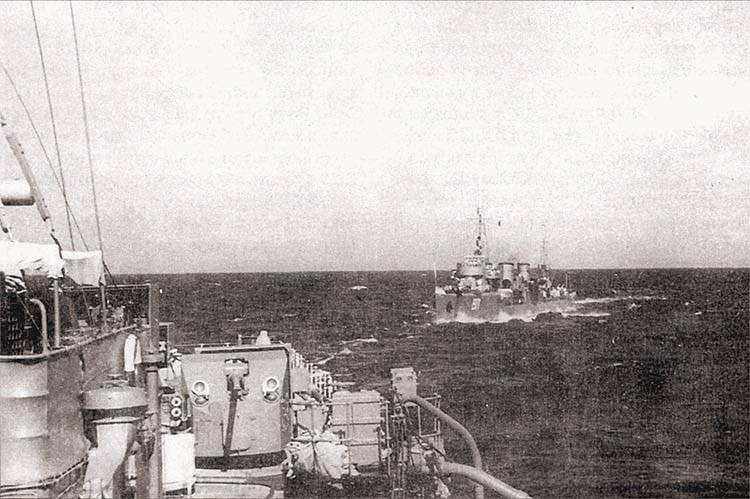
During the shelling, LK launched 30 60-mm high-explosive shells in 305 salvoes (the Finns counted almost 100 - author's note). The command of the Red Banner Baltic Fleet considered that the Finnish battery did not receive any damage from our shooting, however, as it became known after the war, during the shelling a shell fragment was damaged barrel number XXNX, which until the end of the war was no longer valid. He was removed from the machine and placed next to the ground. By the way. of this gun crew, two were killed and 6 people were injured. In the opinion of the Finnish side, the battery received “minimal damage” (therefore, it is difficult to agree with I. F. Tsvetkov, who claimed that “the artillery of the battleship ... caused a number of serious damage to the enemy’s fortifications” - see I. F. Tsvetkov. Battleship “October Revolution "L, 3, s.1983).
According to the results of the operation deputy. NKVMF announced gratitude to the personnel "for the excellent performance of the combat mission." Artillery specialists also considered that “the artillery gunners of the military hardware decided correctly the task, taking into account the situation”. The disadvantage in the actions of the LC was an unsuccessful choice of course angles, since on traversing KU enemy guns could pierce the side of the LC.
After the battle, it became clear to the fleet command that there are large-caliber 2 batteries on the island. One of them was identified as 10-inch, which later was confirmed.
Despite the seemingly high appreciation of the squadron’s actions given by I. Isakov, the command of the Red Banner Baltic Fleet remained unsatisfied with the results of the battle. who gave more questions than answers. Therefore, on December 10, the Military Council of the Red Banner Baltic Fleet ordered the operation to destroy the batteries of Saarenpää and Torsaari to be repeated.
To solve this task, the commander of the fleet VF Tributz allowed the simultaneous use of "2 LC, EM" Steregushchy "and the division of the canlodok." But before using the main forces, it was necessary to conduct reconnaissance by the battle of the Finnish defense. To do this, 12 of December 1939 of the Red Banner Baltic Fleet armed forces charged the leaders of Minsk and Leningrad together with the Steregushchiy EM to bombard the Saarenpia battery in order to divert enemy coastal batteries from our EM and canloduses that supported the flank of the 7 Army in the Seivaste region , and also for the purpose of "destruction of the location of the battery."
December 13 squad leaders, as was ordered, undertook the shelling of the alleged location of the 254-mm battery Saarenpää. Because There was no aircraft-spotter that day because of low clouds, the leaders fired on the square. Total ships spent 176 high-explosive 130-mm shells. During the battle, one of our leaders, shooting at the likely location of the Finnish 10-inch battery, accidentally hit the shield of an 152-mm battery cannon, causing it to fail. In turn, the 254-mm battery Saarenpää responded from a distance from 115 to 120 cab. 4-gun salvoes. Despite a number of coverings, the Soviet ships did not get hits.
As a result of the operation, our information on the Saarenpya battery was somewhat refined. On the basis of direction finding and visual observation, it turned out that the 10-inch battery is located in several blocks, one tool in each, separated from each other by 3-4 cab.
December 14 in 10.20 squadron of the Red Banner Baltic Fleet, in the same composition as December 10 - led by the "October Revolution", withdrew from the anchor and went to the assignment. This time, in addition to the squadron commander, VF Tributs, the commander of the Red Banner Baltic Fleet, was aboard the military aviation complex. As before, it was not possible to provide for a squadron of reliable air reconnaissance. Back in 10.57, the Chief of the Operations Division of the Air Force Headquarters warned: “Visibility is 500 m, heights are not, you cannot fly out.” To the edge of the ice squad passed without icebreakers, all the while maintaining readiness number XXUMX.
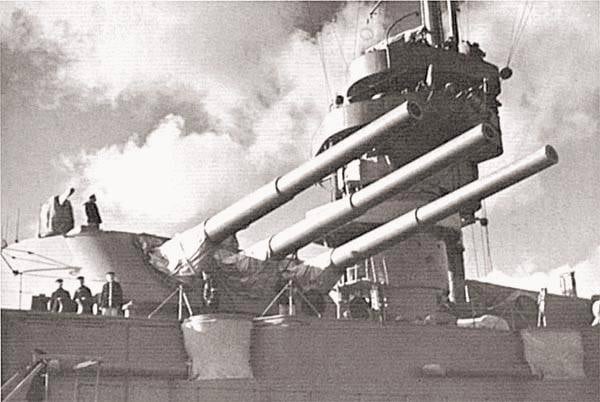
In 12.50, going beyond the edge of the ice, the ships delivered the paravanes and moved on to the 16-node junction. In 13.30 on the aft 170 course angle hail. from starboard, in 3's cab. from the "October Revolution", was seen periscope enemy submarine. EM "Lenin" immediately fired on the submarine and gave a series of short beeps with a siren. With EM and TFR began to drop depth charges - only 40 units.
In 13.53, the deployment of ships for battle began - a combat alarm and readiness No. XXUMX was announced. At this moment, a radiogram was received from the People's Commissar of the Navy: "In the event of poor visibility, no shooting will be fired." In 1, the squadron lay down on the 14.18 grad combat course, after which the ships began to warm up the guns with warming shots. A minute later, “Minsk” fired a two-gun salvo on the Saarenpya battery and simultaneously received a signal from the commander of the fleet, “Kite”, which meant “End of operation”.
Carrying out its task, "guarding" from 14.45 to 15.07 from a distance of 110-115 cab. made four 4-gun volleys on the supposed battery of Finns on about. Torsaari. But the battery of the enemy has not responded. In 14.40 at a point with coordinates 60 deg. 1 min. 2 seconds N, 28 degrees 51 min. 6 seconds About squadron turned on the opposite course. Already in 17.17, the LK October Revolution anchored the Great Kronstadt raid.
Thus, due to poor visibility in the area of the location of the LC and low continuous cloudiness, which excluded the use of aviation, the next operation to destroy the Saarenpä coastal battery was disrupted.
Since the task remained unfulfilled, it was naturally transferred to the future. December 17 for the fleet was given the order number 25 / op, which said:
“The squadron of the Red Banner Baltic Fleet consisting of 1 LC, 1 leader, 3 th DEM, EM“ Steregushchy ”with attached TFR division, battalion BTSch and 6 MO boats to 12.00 18 December 1939 to crush the coastal battery of Saarenya”. In turn, the squadron commander N.N.Nesvitsky instructed the Oktyabrskaya Revolution LC to “destroy the firing points of the southern border of the main fortified area of the enemy, the Saarenpya and Torsaari batteries,” and destroy the Saarenpya battery and the Torsaari battery, case of discovery of fire last. "
In 7.00 on December 18 a board meeting was held aboard the October Revolution, and 10 minutes later was followed by an order to "prepare the ship for battle." In 9.27, LK began to be removed from the anchor, but because of the canlodi that prevented him, he was able to leave the Great Kronstadt raid only an hour later. The squadron of the Red Banner Baltic Fleet in a somewhat abbreviated composition went to sea.
Over the edge of the ice to the LC joined the TFR "Tucha", "Purga" and "Storm", entered into his escort. From this point on, escort ships periodically dropped depth charges. The commander of the approached 1 division of the BTSchch station reported that, according to weather conditions, he could not carry out trawling. As a result, the division was assigned the task of ensuring the PLO of the maneuvering area of the LC.
In 11.36, a combat alarm was declared on the ships, and in 13.40, when approaching the turnaround point for a combat course, LK was shelled from the 125 distance by cab. 254-mm Finnish battery Saarenpää. The first 3-gun volley of the battery went down short of only 3 cab. from the starboard LC. Interestingly, the enemy's battery showed 6 flashes with each volley, and only the 3 projectile fell. Most likely, the 3 flares belonged to the enemy's false guns, and this was done with the aim of not allowing the LC to determine the exact location of the firing guns. Bursts of the 3 th battery volley have risen to the 10 cab. ahead of lk After three volleys, the battery of Saarenpää in 13.45 ceased firing due to the increased distance.
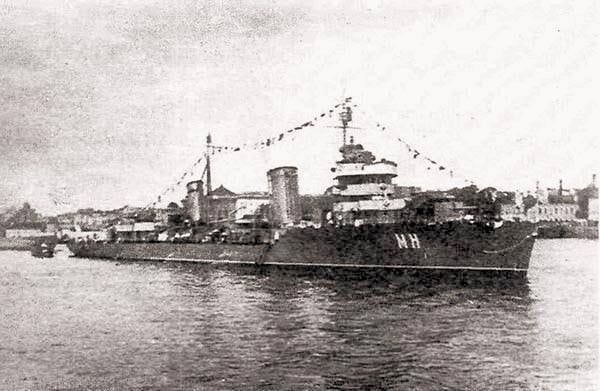
In 13.52, the squadron turned to 35 hail course and degrees, and two minutes later, the LC, which had an 12 hub, moved from a distance of 120 cab. opened fire ch. caliber on the coastline. This time, the position for shooting at the battery was chosen differently - the course angle of the LC was sharper, and he no longer substituted his board for the enemy, as it happened on December 10. After the 3-th salvo of LK, the battery re-opened fire on him. The Finns' salvos, as before, were 3-guns, although 5-6 flares spread across the southern part of the island were observed simultaneously. After several shells exploded astern, LC was forced to increase the speed to 18 nodes. Meanwhile, straightening the coastline, the LC began shelling the 10-inch battery, firing at the square and all the while sticking to the enemy’s observation tower. Making a battery 28 volleys Ch. caliber, in 14.14 LK temporarily stopped shooting and began to turn on the opposite course.
In 14.17, completing the turn, the squadron lay on the true course 215 hail. and reduced the speed to 12 nodes. At this moment, the leader of Minsk resumed firing at the battery, and after 3 minutes, the LC also connected to it. The heading for the battery at this time was 125 hail. PrB, and the distance was 102 cab. In 14.25, the 254-mm battery of Finns began to respond again, but now only from two guns. In 14.36, producing more 25 volleys, the LC again took a break, because it was observed that the volleys of the ship had slipped into the water. At this time, "Minsk" continued to shower the battery with shells.
In 14.42, the squadron began a turnaround and, after 6 minutes, lay down on the true 45 course. The Finnish battery continued to fire at Soviet ships, but from a single gun. After 7 minutes after turning, LK resumed fire. Making more 13 volleys ch. in caliber, in 15.05 LK finished the fight.
As for the enemy's battery, she continued firing to 15.28, when her last projectile fell with an undershoot 2 cab. from LK. The 15.37 squadron turned on the true course 90 hail. and went to Kronstadt.
During the battle, the October Revolution spent 206 305-mm projectiles (according to Finnish data, almost 300), the leader of Minsk was 141 130-mm projectile, Steregushchy - 99 130-mm projectiles. The results of this attack were assessed by the Red Banner Baltic Fleet command as extremely optimistic. From the fact that the battery first fired three guns, then two, and at the end of the battle only one, it was immediately concluded that the firing of the LC was very marked, as a result of which the 2 of three guns of the Saarenpya battery was incapacitated. The squadron commander hurried to report to the Navy Commissar that "the case is almost over, there is only one gun left." The reason for this conclusion was the assumption that the ships are dealing with an ordinary open battery, and that the fall of the 12-inch projectile in 12-15 m from the installation will damage the cannon servant and lead the gun to silence. This statement subsequently became firmly established even in very respectable works, the authors of which confidently stated that the battery was on Fr. On this day, Bierke was "put down", and out of "three shelling guns, two were put out of action." However, all these assumptions had nothing to do with reality.
Examined after the war, Finnish fortifications on about. The Bierke commission of the Red Banner Baltic Fleet concluded that because of the inaccuracy and even the “erroneousness” of information about the enemy, no direct hit in the battery guns was ever achieved - only one flight took place. According to experts, the enemy’s battery cannons probably did not receive any damage, but “it is possible that the battery's gearbox was shot down (most likely it was December 19 - approx. P. P. P.)”. This is fully consistent with the Finnish data, according to which the battery of Saaren-pya managed to avoid damage from the fire of our LC, but buildings and woods in the area of the battery suffered greatly. Thus, despite the wasteful consumption of ammunition, the results of the shooting were more than modest.
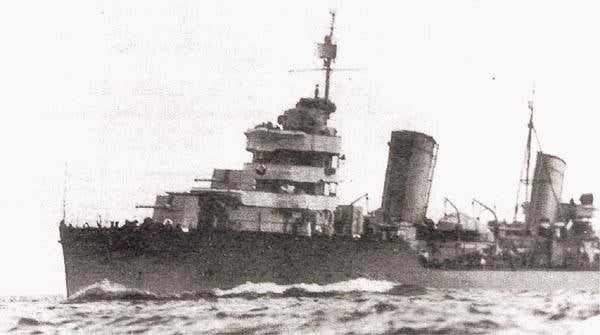
Weak consolation for us was that the Finns, firing 58 shells, did not hit any of the squadron ships. This, according to N.N.Nesvitsky, was the "biggest failure" for the enemy.
Now, after such a “success” as the fleet commander supposed, it was only necessary to finish off the enemy battery. Therefore, the next day, another operation was appointed to destroy the battery of Saarenpya. But this time, the squadron was changed - the LC Marat, which had not yet had a single combat exit, was sent to the task as a strike force. LK was allowed to expend 120 high-explosive shells. His position for the shelling was determined by the same as in the December operation 18.
In 2.00, December 19 received orders to prepare the ship for the operation on Marat, and an hour later, the military order of squadron commander No. XXUMXop / ss, which set the task of destroying Saarenpya coastal battery with artillery fire.
Early in the morning, EM Karl Marx, Artyom and Engels left the Main Base for trawling the maneuvering area of the LC. In 9.44 "Marat", on board which were already deputy. NKVMF I.S.Sakov and squadron commander N.N.Nesvitsky, withdrew from the anchor and went to sea. The leader "Minsk" and EM "Steregushchy" and "Lenin" went to him in the wake. Over the edge of the ice, the squadron was joined by the TFR and TSC, who took their places according to the hiking warrant.
The two previous operations contributed to some, although very approximate, clarification of our battery information, but the exact locations and nature of the guns (open or tower) remained unclear to us. According to the photograph taken by the aircraft of the Red Banner Baltic Fleet Air Force, the code interpreter verbally conveyed that, perhaps, the tower battery (this illusion was created by an unmasked cement circle around the guns), but no one believed it.
Unlike past operations, this time air cover and reconnaissance was organized. In 10.15, an airborne barrage of I-16 fighters that flew in variable courses was set over the squadron. At 11.56, at the request of the squadron commander, the reconnaissance aircraft MBR-2 (from 11-th AE) flew to adjust the fire of the LC. An hour later, Marat established contact with the plane-spotter in 13.22 from the 120 distance cab. Began to fire a battery of guns Ch. caliber. After 8 minutes Finnish battery from the distance 118 cab. opened response fire on the Soviet LK. At first she fired from only one gun, and then switched to 2-x and 3-gun volleys, which greatly surprised the squadron commander - he believed that only one enemy weapon would meet him, because the other two, in his opinion, were suppressed during the previous battle.
Symbols:
A - reinforced concrete barracks (bomb breaking on the 2-th floor);
B - power station;
B - residential buildings;
G - dining room;
D - reinforced concrete warehouse (destroyed by a bomb break);
E - barracks (destroyed by a bomb explosion);
W - false anti-aircraft installations
The first Finnish shells fell with small undershoots, at a distance from 12 to 20 m from the side of the LC, but soon the flights began. In turn, the LC, using data from the spotter, focused on the shelling of the right wing of the battery. The first 15 salvoes LK, according to Finnish information, lay near the observation tower and the gun №5, without causing the latter damage. At the same time, the fire commander of LK, captain-lieutenant L.V. Novitsky and the range sailor Moroz, clearly saw how after one of their 4 volleys, one of the projectiles broke through the observation post of a battery gearbox, and a column of smoke immediately rose. Around the 13.38, the next salvo of the Marat led to silence the gun # XXUMX of the Finnish battery: as a result of a close rupture of the projectile, it was filled with earth, stones and tree trunks. From the gun crew, 5 was killed and 1 Finnish gunners were injured.
In the 13.40 2-gunfire of the Finnish battery covered the LC. The squadron reduced the speed to 12 nodes, and after 5 min. LK stopped firing and turned on the reverse course 215 hail. But already in 13.49 the fire on the battery was resumed. Meanwhile, the MBR-2 continued to inform the LC about the next breaks near the guns and about the big explosion “near the artillery cellars” of the battery. Responding 2-gun volleys (from the guns Nos. 1 and 2) the batteries of the Finns began to fall quite close to the LC, and some volleys even covered it, as a result of which the squadron was forced to increase the course to 18 nodes. The shooting of Finnish gunners, according to the observations of our commanders, by the end of the battle was becoming more nervous and inaccurate. In 13.58, Marat made a 37 th volley and ended the fight on this, because exhausted all the ammunition released for operation (136 305-mm high-explosive shells).
The squadron commander signaled the “End of Operation” signal, and in 14.00 the squadron turned on the true course of 180 hail. Despite this, the battery Saarenpya still for 10 min. continued to bombard Soviet ships with 2-gun salvoes.
The fact that the enemy's battery once again remained unsuppressed became clear to us by the end of the battle. The commander of the warhead-2 "Marat" immediately reported to the commander of the LC, that "the result of his fire impact is unknown exactly." The squadron commander had no choice but to report to the fleet headquarters: "There are no hits." Deputy The NKVMF clarified it somewhat: “Today, the battery did not suffer any damage from aviation and fire of the LC.”
According to Finnish data, the battery of Saarenpää practically did not suffer, except for the great destruction of various buildings. The Red Banner Baltic Fleet Commission, which examined the Finnish battery after the war, came to the conclusion that the shooting of “Marat” on this day “did not have any success”. The reasons for this were the poor visibility of the target from the aircraft (the pilot-observer didn’t see the battery itself, he noticed only flashes of guns), the pilot’s lack of a photo-plan and a strong dispersion of LC fire. The command of the Red Banner Baltic Fleet remained to be comforted by the fact that the fire of the Finns, too, proved to be ineffective - all 35 254-mm shells fell with hops or undershoots.
So, it was necessary to start all over again. But now the armed forces of the Red Banner Baltic Fleet decided to develop a plan for a joint operation - a strike on Saarenpya LC together with the bombers. According to the plan, X-NUMX airplanes with DB-30 bombs FAB-3 and FAB-1000 were supposed to be in the air and, at a signal from the squadron commander, hit the battery, focusing on the outbreaks of the guns. In order for the fleet No. 500 / op from 35 December 29, the squadron's task was stated as follows: “A squadron of the Red Banner Baltic Fleet as part of the Oktyabrskaya Revolution LK, two leaders, 1939-th DEM, 3-X BTsch and 4-CKR reconnoiter and extinguish the batteries of Saarenpää, Torsaari. "
Preparations for the operation began as early as December 29 1939 - EM "Artem" and "Volodarsky" went on a night reconnaissance trawling (with paravanes) of approaches from the sea to Fr. Bierke. The ships reached the island at a distance of 58 cab., But they did not find a mine.
In 7.24 30 December “October Revolution” came out of the Small Kronstadt raid and, together with a detachment of ships, set off for the task. Unlike previous trips, this time the icebreaking escort was reinforced - the squadron was accompanied by icebreakers "Ermak", "October" and "Truvor". From the outset, the ships had to lay a course in solid ice, which, of course, strongly affected its speed. In addition, bad weather clearly excluded the possibility of using aviation. Therefore, an alarm signal was received from the squadron commander with 13.15: “Interaction is broken.” And after 20 min. He sent the following radiogram to the Comflot VF Tributsu: “In connection with the late time and poor visibility, I ask you to postpone the joint attack on aviation to 11.00 31 December. LK goes to the anchor place Shepelevsky lighthouse. Light forces go out to clean water. 3 th DEM re-set on the trawling. "
December 31 with the help of "Yermak" LK continued in the ice its way to the west, going at a speed of 6,5 nodes. He was able to get to clean water only in 16.00. Due to poor visibility, the operation was postponed, and the "October Revolution" was anchored in the area of the Shepelev lighthouse, and light forces - between Black Lakhta and Red Gorka.
At night, wind intensification and ice movement towards the coast began. The anchors no longer held a LC — its drift in the ice was 1,5 km / h. Around 2 hours 1 January 1940 g. With wind 5 points "October Revolution" began to drift in the moving ice to the south, and the drift speed reached 7 km / h. The drift icebreakers “Truvor” and “October”, which were ahead of the LC, could not break the ice anymore. In 9.06, the squadron commander received an order: “With the arrival at a distance of fire, open fire on the Saarenpän battery from the limit with rare fire.” A little later the order was received: do not open the fire, and discharge the charged guns on the Saarenpya battery.
Acting on orders, the October Revolution in 14.54 made three 4-gun shots on the battery, and then turned back. The enemy's battery did not return fire.
Due to unsatisfactory weather, the Red Banner Baltic Fleet aviation did not take part in the operation.
On January 2, LK was again in position, but because of the very bad weather conditions, the shelling did not take place again - the 9-point storm and snowstorm soon began. LK again firmly stuck in the ice. The ice field continued to drift to the north-west, towards the enemy’s minefields, at a speed of 2,5 km / h. At times, the October Revolution, along with the icebreaker, was left without movement.
In 12.10 NS fleet, Yu.A. Panteleev radioed the squadron commander: “If it is impossible to carry out the operation, release the OLS through the bases. Leaders - in Libau, destroyers and TSC - in Tallinn and Paldiski. After some time, the operational duty officer of the fleet headquarters told N.N.Nesvitsky the last weather forecast: "2 and 3 in January are medium and poor visibility, overcast, snowfall." Now it was quite clear that, under such severe weather conditions, it would not make sense to continue the operation.
As a result, the Red Banner Baltic Fleet armed forces ordered the squadron ships to return to the bases. The leaders had to go to Liepaja, EM - to Tallinn, TFR and TCH - to Tallinn and Paldiski, and the "October Revolution" - to Kronstadt. The return trip lk to his base was very long. Deciding on a radio beacon and using full emergency routes, the October Revolution on 21.13 hardly reached the Red Gorka raid. And only the next day, January 3, in 16.45, LK entered the Great Reid of Kronstadt.
Based on the results of the operation, the commander of the Red Banner Baltic Fleet, VF Tributz, reported to the People's Commissar of the Navy N. G. Kuznetsov that he "considers it difficult to use the LC in the ice". This, in fact, ended not only the last operation of the Red Banner Baltic Fleet squadron against the coastal batteries of the Finns, but also the general use of military maneuvers in the Soviet-Finnish war.
Concluding the conversation about the battles of the Baltic LC, it is necessary to make some clarifications. The fact is that in a number of well-known works on stories The fleet contains various inaccuracies that can subsequently lead to serious errors.
For example, I.F. Tsvetkov, in his book, claims that the “October Revolution” allegedly went out on December 22 to fire on the Saarenpya battery. It can be assumed that in this case he was referring to the operation of LC, which was performed on December 18, but was wrong with the date. But then the author cites absolutely fantastic information about two campaigns of the “October Revolution”, undertaken by him in January 1940 in order to provide artillery support to the offensive of our troops in the Vyborg Bay area. This could not be even in principle, since by mid-January 1940, the entire Gulf of Finland was a solid ice field, which completely excluded any possibility of exiting our warships. By the way, at that time, the LC was undergoing maintenance in Kronstadt and, with all the desire, could not get out to sea.
U. Meister also reports in his article about the mysterious "repeated" output of the "Marat", which at noon on December 24 approached the Saarenpya coastal battery over a long distance.
A lot of mistakes are contained in the work of F.V. Borgmann, where it is written that LC, with poor visibility, fired on the battery, “standing on anchors” (?!), That the batteries were fired from ferries (!) Armed with 130-mm guns and etc.
Thus, one should be very critical of the literature available on this issue.
It is time to take stock, which, as we know, turned out to be very disappointing. According to the report of the Red Banner Baltic Fleet, Yu.A. Panteleev, the squadron spent on the Saarenp coastal batteries 402 305-mm (and not 800, as FVBorgmann claims - approx. PP) and 176 130-mm high-explosive shells (the last leaders - note PP), and all - 578 shells.
Evaluating the firing of the LK, the commander of the Marat, SF Belousov, suggested: “It is known that the tower was hit, there is an 1 hit near the battery and another 4 hit”. The commission of the Red Banner Baltic Fleet, which worked after the war, came to the conclusion that no direct hit in the courtyards of the 254-mm Sahamenpya battery guns was achieved. In the area of the firing positions and fortifications of the battery, there were many traces of the falling of LC shells, but most of them were flights. True, the body of the gun №6 was removed from the machine and with the cut off part of the trunk lay on the ground. But this was not the result of a direct hit, but rather indirect damage resulting from the rupture of a projectile in the December 10 battle. On the other hand, there was one hit of an 130-mm projectile in the shield of an 152-mm battery gun, located in the southeast of Fr. Bierke. This was probably the result of the work of the leaders "Minsk" and "Leningrad" during the December 13 battle (although the nature of the damage was such that the weapon was disabled for no more than a day).
As the Finns believed, a total of about 400 t (sheer exaggeration - in fact no more than 200 t - approx. P.P.) shells were fired around Koivisto island during shelling by its ships of the squadron, but despite the huge masses of metal , "The actual result of the artillery was insignificant." The loss of personnel of the gun battery calculations did not exceed 1 / 10. And most importantly - "the batteries remained intact until the last day."
“The shells fell anywhere, but not on the batteries, due to inaccurate knowledge of the places of these batteries by ship artillerymen,” such a verdict was issued by the People's Commissar of the Navy N.G. Kuznetsov in his directive No.16015ss / s from 14 February 1940. , 8 on April, at a meeting of the Red Banner Baltic Fleet armed forces, he noted that our failures in the Bierk Archipelago are explained by the fact that the fleet acted "uncivilized and illiterate."
At a meeting of the Red Banner Baltic Fleet commanding officers, held on 13-14 in March 1940, there was a lot of controversy about the reasons for the squadron's ineffective actions against the Finnish Saarenpä battery. At the same time, the commander of the squadron N.N.Nesvitsky put all the blame solely on naval intelligence, who could not get reliable information about the location of the enemy battery and, in general, sought to prove to those present that the LC was not doing their job. In turn, the commissioner of the Red Banner Baltic Fleet Intelligence Division, Rebukhin, accused the commanders of the formations (first of all, the squadron) of not wanting to obtain information about the enemy, striving to disclaim all responsibility for reconnaissance and bad shooting. In the end, everyone agreed that the main reason for the failed LC actions against the enemy’s coastal batteries was the lack of accurate intelligence and good air correction.
Strangely enough, but the most important reason for the unsatisfactory shooting of the Baltic LC was low combat training of artillery crews — almost no one “paid attention.” As mentioned above, on the 1939 shooting, the battleships barely got a troika. Given this circumstance, there is nothing surprising in the fact that the LC could not get into any of the Finnish weapons. Nevertheless, the combat training of personnel at the meeting was simply forgotten and no conclusions were made.
Naturally, the result was not long in coming: at the 1940 shooting, the Red Banner Baltic Fleet ships shot out so that they blocked all the "achievements" of last year. For example, Marat advanced 11 satisfactory and 10 unsatisfactory firing against 6 good and 1 (!) Excellent, and October Revolution 15 satisfactory and unsatisfactory against 13 good and excellent. Well, the cruiser "Kirov" just broke the record - the 17 satisfactory and unsatisfactory shooting against the 5 good and excellent. This gave N.G.Kuznetsov an excuse to notice at the gathering of fleet and flotilla commanders in December 1940 that “in the combat training of the Red Banner Baltic Fleet this year it was an unconditional failure”.
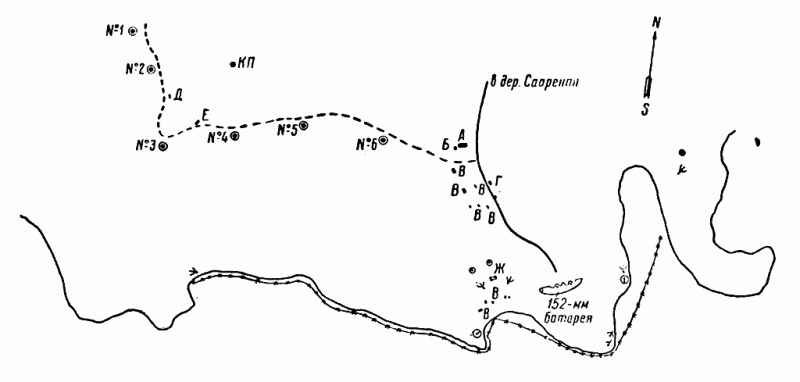
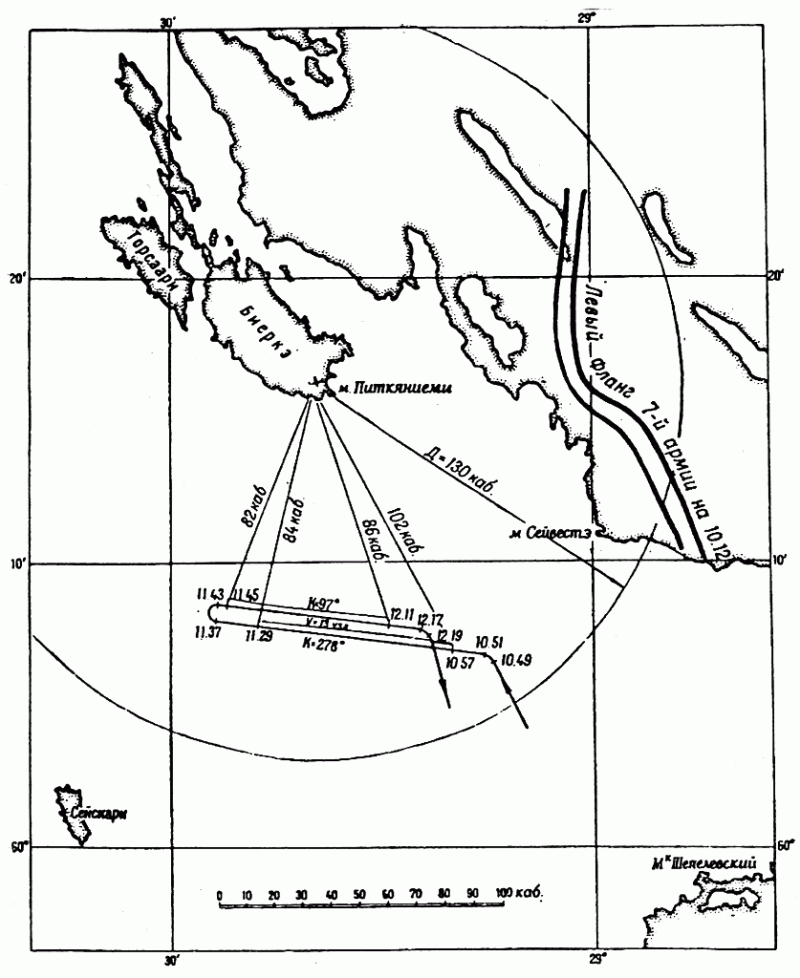
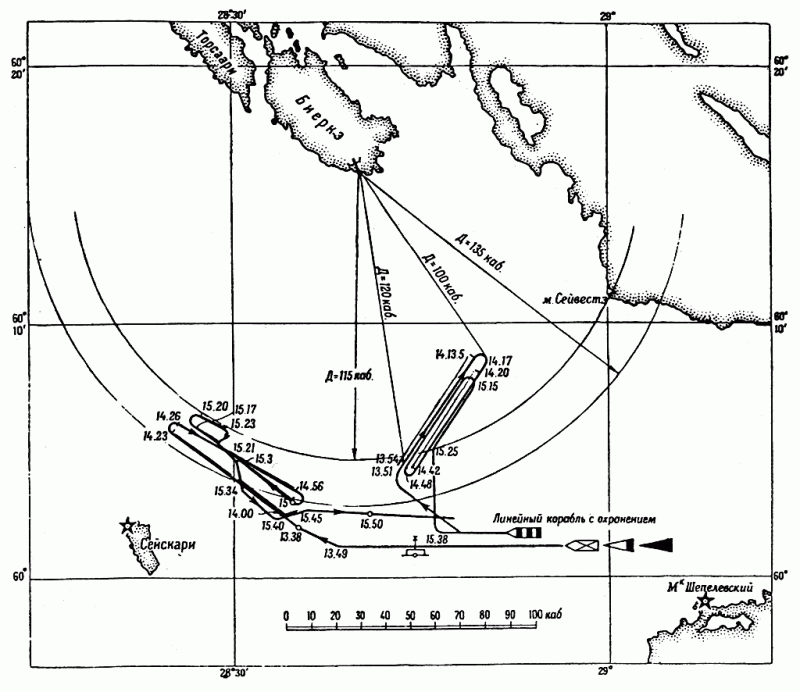
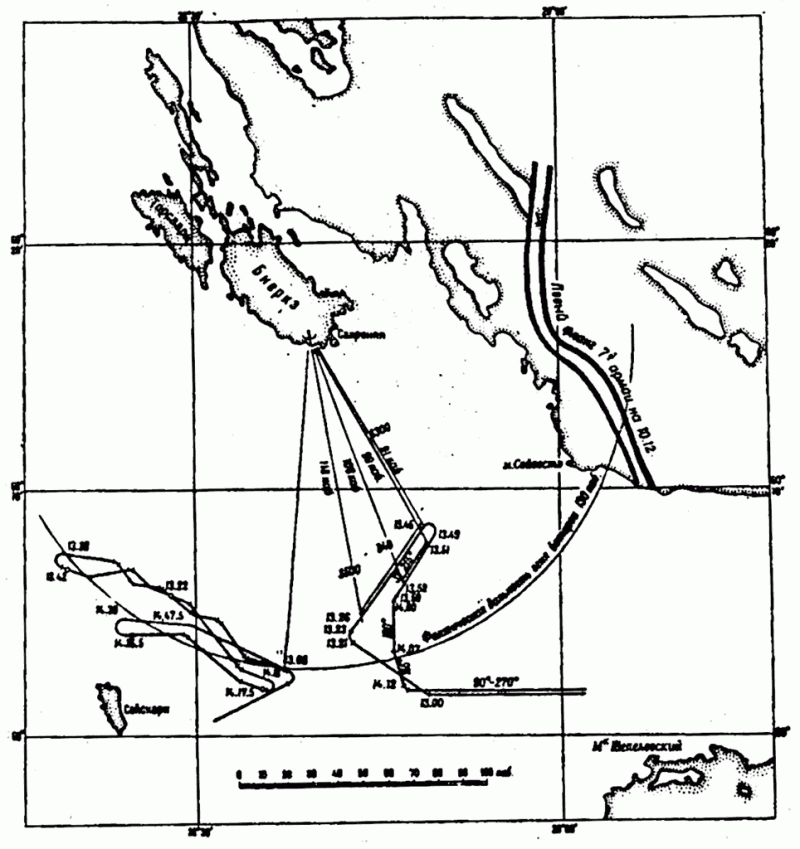
Information